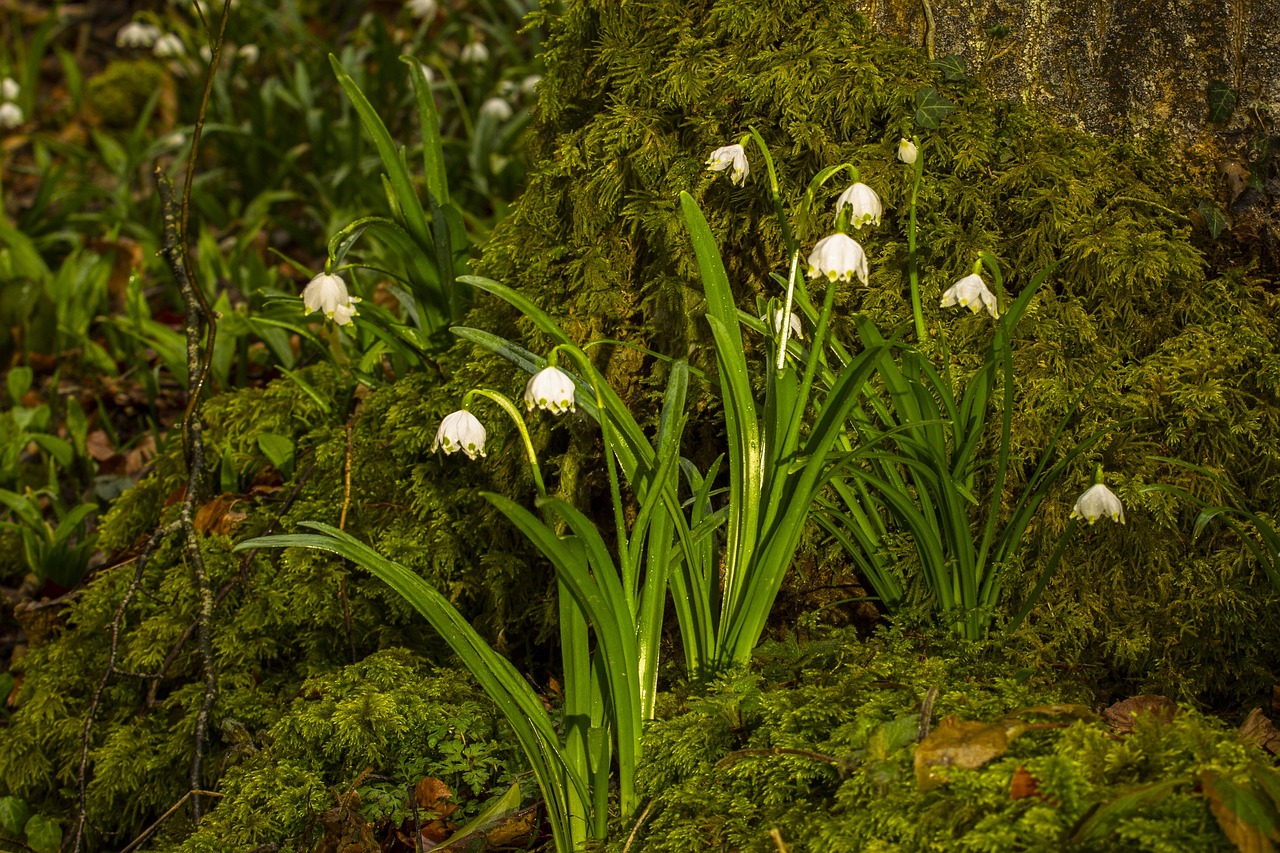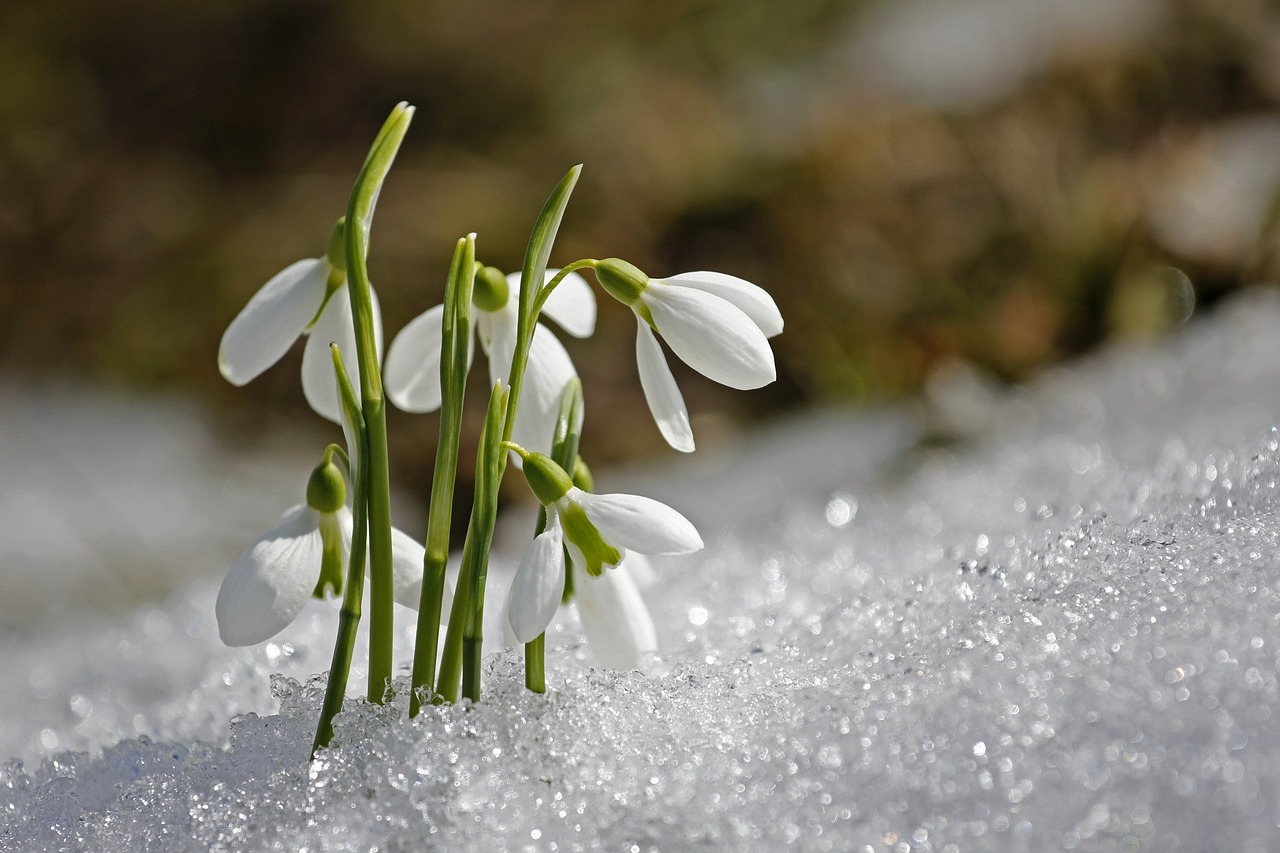To achieve the best results when planting snowdrop bulbs, do so in the fall, typically from September to November. Choose a well-draining location with partial to full shade. Plant the bulbs about 3 inches deep and 3 to 4 inches apart to allow for proper growth.
Understanding Snowdrop Bulbs
Snowdrop bulbs, known scientifically as Galanthus, are among the first flowers to bloom in spring. These charming blooms can bring life to your garden after winter’s chill. Their delicate white flowers often peek through the snow, hence their name. Understanding how to plant them properly can lead to a vibrant display in your garden.

Snowdrops are hardy perennials that thrive in various soil types. However, they prefer well-drained soil enriched with organic matter. They are also tolerant of a range of light conditions but flourish best in areas with partial shade. This adaptability makes them an excellent choice for many gardeners.
Ideal Planting Time
The ideal time to plant snowdrop bulbs is during the fall months. Planting typically occurs between September and November, before the ground freezes. This timing allows the bulbs to establish roots before winter. Snowdrop bulbs require a chilling period to bloom effectively in spring.
If you miss the fall window, you can plant them in early spring, but the results may not be as robust. Spring planting can result in smaller flowers and delayed blooming. Therefore, it is best to plan ahead for fall planting to enjoy a beautiful spring display.

Choosing the Right Location
Selecting the right location for your snowdrop bulbs is crucial for their growth. Here are some key considerations:
- Light Conditions: Snowdrops thrive in partial shade but can also handle full sun. Avoid overly shaded areas where they may struggle to bloom.
- Soil Quality: Well-draining soil is essential. Heavy clay or soggy soil can lead to bulb rot. Amend the soil with compost if necessary.
- Proximity to Other Plants: Snowdrops can be planted among other perennials or beneath deciduous trees where they will receive sunlight in early spring before the trees leaf out.
Preparing the Bulbs for Planting
Before planting snowdrop bulbs, it is essential to prepare them properly. Here are some steps to follow:
- Inspect the Bulbs: Check for any signs of damage or rot. Healthy bulbs should feel firm and be free from mold.
- Soak if Needed: If the bulbs appear dry, soak them in water for a few hours before planting. This helps them hydrate and promotes better growth.
- Choose the Right Depth: Generally, plant snowdrop bulbs at a depth of about 3 inches. This depth protects them from frost while allowing them to grow effectively.
Planting Snowdrop Bulbs
The actual planting process for snowdrop bulbs is straightforward. Follow these steps:

- Dig Holes: Use a garden trowel or bulb planter to dig holes at a depth of about 3 inches.
- Spacing: Space the bulbs about 3 to 4 inches apart. This spacing allows ample room for growth and prevents overcrowding.
- Place Bulbs: Position each bulb with the pointed end facing up. This orientation encourages proper growth.
- Cover and Water: Cover the bulbs with soil and gently tamp down. Water thoroughly after planting to settle the soil around the bulbs.
By following these guidelines, you can ensure that your snowdrop bulbs are well planted and ready to bloom beautifully come springtime.
After Planting Care for Snowdrop Bulbs
Once you have planted your snowdrop bulbs, proper care is essential to ensure they thrive. While these bulbs are relatively low maintenance, they still require attention during their growth period. Here are some key aspects to consider:
Watering
Watering is crucial after planting to help establish the bulbs. Here are some tips:

- Initial Watering: Water the bulbs thoroughly right after planting. This helps settle the soil around them and ensures they start off with adequate moisture.
- Ongoing Watering: During the growing season, keep the soil moderately moist. Avoid overwatering, as soggy soil can lead to bulb rot.
- Natural Rainfall: Snowdrops typically receive enough moisture from natural rainfall in the spring. However, in prolonged dry spells, supplemental watering may be necessary.
Mulching
Applying mulch can provide several benefits for snowdrop bulbs. Consider using organic mulch materials such as shredded bark or straw. Here’s why mulching is beneficial:
- Soil Temperature Regulation: Mulch helps maintain consistent soil temperatures, protecting bulbs from extreme cold.
- Moisture Retention: It prevents moisture loss from the soil, ensuring that the bulbs remain hydrated.
- Weed Suppression: A layer of mulch can inhibit weed growth, reducing competition for nutrients.
Fertilizing Snowdrop Bulbs
Fertilization can enhance the growth and blooming of snowdrop bulbs. Follow these guidelines for effective fertilization:
- Type of Fertilizer: Use a balanced bulb fertilizer or an organic option like compost. Avoid high-nitrogen fertilizers, as they may promote leaf growth at the expense of flowers.
- Timing: Apply fertilizer in early spring as the bulbs begin to sprout. This timing helps nourish the plants during their active growth phase.
- Application Method: Sprinkle the fertilizer around the base of the plants, avoiding direct contact with the bulbs. Water thoroughly afterward to help the fertilizer penetrate the soil.
Pest and Disease Management
While snowdrops are generally resistant to pests and diseases, it’s important to be vigilant. Here are some common issues and how to address them:
Pests
Snowdrops can occasionally attract pests like snails and slugs. To manage these pests:
- Handpicking: Regularly inspect your garden and remove any visible slugs or snails by hand.
- Baits and Barriers: Use commercial slug bait or create barriers with copper tape around your plants to deter these pests.
Diseases
The most common disease affecting snowdrop bulbs is bulb rot, often caused by overly wet conditions. Here are preventive measures:
- Soil Drainage: Ensure your planting area has excellent drainage to prevent water accumulation around the bulbs.
- Disease-Free Bulbs: Purchase bulbs from reputable sources to avoid introducing diseases into your garden.
When to Expect Blooms
One of the most rewarding aspects of planting snowdrop bulbs is witnessing their beautiful blooms. Typically, snowdrops begin to flower in late winter to early spring, depending on local climate conditions. In general, you can expect blooms:
- In Warmer Climates: Late January to February
- In Colder Climates: March to early April
The delicate white flowers often last for several weeks, providing a lovely contrast against the backdrop of lingering winter landscapes. As they bloom, snowdrops can signal the arrival of spring and add beauty to any garden.
Naturalizing Snowdrops
Snowdrops are excellent candidates for naturalizing, meaning they can multiply and spread naturally in your garden over time. To encourage this process:
- Avoid Disturbance: Once established, try not to disturb the bulbs after they have bloomed.
- Allow Foliage to Die Back: After flowering, let the foliage die back naturally before cutting it down. This allows the plant to gather energy for next year’s blooms.
- Plant in Groups: When planting additional bulbs, group them in clusters for a more natural look and encourage spreading.
Common Varieties of Snowdrops
There are several varieties of snowdrops, each with its unique characteristics and charm. Understanding the different types can help you choose the right ones for your garden. Here are some popular varieties:
| Variety | Description | Bloom Time |
|---|---|---|
| Galanthus nivalis | This is the most common snowdrop variety. It features classic white flowers and is known for its hardiness. | January to February |
| Galanthus elwesii | Larger than G. nivalis, this variety has broad leaves and showy flowers, often with green markings. | February to March |
| Galanthus plicatus | This species has narrow leaves and larger flowers. It is known for its ability to naturalize. | February to March |
| Galanthus nivalis ‘Flore Pleno’ | A double-flowered variety that provides a fuller appearance, creating a more dramatic display. | February to March |
Each variety has its own charm and can provide different aesthetics in your garden. When selecting snowdrop bulbs, consider factors like bloom time and growth habits to create a diverse springtime landscape.
Companion Planting with Snowdrops
Snowdrops can thrive alongside various plants, enhancing the beauty of your garden. Companion planting involves pairing plants that benefit each other in terms of growth, aesthetics, or pest control. Here are some excellent companion plants for snowdrops:
- Crocus: These early bloomers complement snowdrops beautifully with their vibrant colors, creating a stunning display.
- Winter Aconite (Eranthis hyemalis): Another early bloomer, winter aconite produces bright yellow flowers that contrast well with snowdrops.
- Primroses: With their soft colors, primroses can enhance the charm of snowdrops as they bloom in early spring.
- Hellebores: These shade-tolerant plants bloom around the same time as snowdrops and add depth to garden beds.
When planting companion plants, consider their light and soil requirements to ensure compatibility with snowdrop bulbs.
Harvesting Snowdrop Seeds
If you want to propagate snowdrops further, you can collect seeds from the plants. This process allows for the potential growth of new snowdrop bulbs. Here’s how to do it:
When to Harvest Seeds
Seeds are typically ready for harvesting when the seed pods turn brown and begin to dry out. This usually occurs after the flowers have faded in late spring to early summer.
How to Harvest Seeds
- Wait for Dry Pods: Monitor the pods closely as they dry. They should not be left too long on the plant, as they can split open and disperse seeds prematurely.
- Cut Pods: Using clean scissors or pruners, carefully cut the seed pods from the plant without damaging the surrounding foliage.
- Store Seeds: Place the harvested pods in a paper bag and store them in a cool, dry place until you are ready to plant them in the fall.
Potential Challenges with Snowdrop Bulbs
Although snowdrops are relatively easy to grow, some challenges may arise. Being aware of these potential issues can help you take appropriate action:
Environmental Stress
Extreme temperatures or unexpected weather conditions can impact the growth of snowdrops:
- Frost Damage: Late frosts can damage emerging shoots. Consider mulching earlier in the season if frost is expected.
- Drought Conditions: Prolonged dry spells may stress the bulbs. Maintain consistent moisture levels for optimal growth.
Pest Infestation
Pests, such as aphids or bulb flies, can affect snowdrop health. Keep an eye out for signs of infestations:
- Aphids: These small insects can be managed with insecticidal soap or neem oil.
- Bulb Flies: To prevent bulb fly infestations, ensure proper drainage and avoid planting bulbs in overly wet conditions.
By understanding these challenges and taking proactive measures, you can maintain a healthy and thriving snowdrop garden.
Seasonal Maintenance Tips
After your snowdrop bulbs have bloomed and the foliage has died back, there are several maintenance tasks to consider. These tasks will help prepare your garden for the next growing season and ensure your snowdrops continue to thrive.
Post-Bloom Care
Once the snowdrops have finished blooming, it’s important to care for the remaining foliage:
- Do Not Cut Foliage Immediately: Allow the green leaves to remain until they turn yellow and die back naturally. This process allows the plant to store energy in the bulb for future growth.
- Fertilization: After the foliage has died back, consider applying a slow-release fertilizer to provide nutrients for the next season. This will support healthy bulb development.
- Watering: If conditions are dry, provide occasional watering during the summer months to help the bulbs store moisture for next year.
Preparing for Next Season
As fall approaches, you can begin preparations for the next planting season:
- Inspect Bulbs: If you decide to lift and divide bulbs, check their condition. Healthy bulbs should be firm and free of rot.
- Replanting: If you lift bulbs, replant them immediately in well-draining soil at the appropriate depth.
- Mulching: Adding a layer of mulch in late fall can help protect the bulbs from extreme winter temperatures.
Environmental Impact and Sustainability
When planting and caring for snowdrop bulbs, consider their environmental impact. Snowdrops are native to various regions; however, some species may be at risk due to habitat loss. Here are ways to ensure sustainable gardening practices:
- Choose Native Varieties: When possible, opt for native snowdrop species that are better adapted to your local ecosystem.
- Avoid Invasive Species: Be cautious of introducing non-native varieties that may outcompete local flora.
- Promote Biodiversity: Planting a variety of flowers and plants helps support local wildlife, including pollinators.
Final Thoughts
Planting snowdrop bulbs can be a rewarding experience for any gardener. Their early spring blooms provide much-needed color and life after winter. With proper planting techniques, ongoing care, and an understanding of their needs, you can enjoy a beautiful display year after year.
The key to success lies in selecting the right location, providing adequate moisture, and being mindful of pests and diseases. Remember to allow the foliage to die back naturally and consider seasonal maintenance to prepare for future blooms. By following these guidelines, you can create a thriving environment for your snowdrops and enhance the beauty of your garden.
As you cultivate your snowdrop garden, take pride in contributing to biodiversity and sustainability. The joy of seeing your snowdrops bloom each spring is not only a delight for you but also a gift to the surrounding ecosystem.
Happy gardening!
